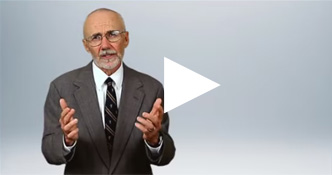Raising Planned Gifts Through a Campaign Framework: It Works But Be Careful!
by William J. Moran, J.D., M.S.Ed.
Published in Fund Raising Management/May 1998
Campaigns are “A Changing”
The traditional capital campaign is not what is used to be. Once, these campaigns were used for a new building or other capital improvements that needed extraordinary funding. But over time, fund raisers found that this remarkably effective fund raising method could also be used to raise dollars for programs and endowment. These campaigns are now used to fund current program and endowment needs as well as bricks and mortar. Campaigns which combine capital, program and endowment needs are called “Comprehensive Campaigns” or “Integrated Campaigns”.
Planned Giving “Merged” into the Campaign
Today, campaign fund raising and planned gift fund raising are merging. Planned gifts work well in growing dollars for the future – creating endowment. Because today’s campaigns often raise endowment, planned giving is an appropriate vehicle. For example, planned gifts may be used to fund an endowed scholarship. The donor may be solicited for a current gift to cover the annual scholarship cost and an estate gift to permanently endow the scholarship.
First, does this mixing of planned giving and campaign fund raising work? The short answer is “yes”. Second, do you have to be careful when you combine these two fund raising methods? Again, the answer is “yes”.
From 1987 to 1996, I worked at Saint Luke’s Hospital Foundation in Kansas City as Director of Planned Giving. In 1994, we went into an integrated campaign to raise $50 million to endow medical education at the hospital. Here are some of the lessons learned from our experience in raising planned gifts as part of an endowment campaign.
The Campaign Provided Closure for Planned Gifts
The Saint Luke’s campaign harvested planned gifts that had been in process for a number of years. Often, donor procrastination had prevented closure up to this point. Donors had been thinking about planned giving for the Hospital but had not done anything about it. When they were approached for the campaign and given the option of a planned gift, they took action. The campaign’s sense of urgency motivated them to act. It provided a “bump” to overcome their procrastination.
The Campaign Encouraged a Number of Smaller Planned Gifts
The campaign encouraged a number of smaller planned gifts that should start many donors down the road toward an ultimate gift. For instance, in the Saint Luke’s campaign we had physicians and other donors in their 40’s and 50’s make $130,000- $150,000 insurance gifts. These are certainly major gifts but probably do not represent ultimate gifts for these donors. However these planned gifts qualified them for membership in the Saint Luke’s Heritage Society. This will open the door for other larger planned gifts as these donors mature and become more involved with the Foundation.
The Campaign Uncovered Values for a Number of Planned Gifts
Often a charity has identified a number of estate expectancies but does not know their value. In the Saint Luke’s campaign, we counted previously unvalued estate gifts if the donor signed a written valuation form. This allowed us to uncover the value of many planned gifts that were previously unknown.
The Campaign Created a Tremendous Awareness of Planned Giving Vehicles
Fund raising campaigns, by their nature, create tremendous awareness for the charity. The marketing and intensity of a campaign highlights the institution’s importance as a recipient of philanthropy. When planned giving was integrated into the campaign the result was an extraordinary increase in awareness of planned giving among Saint Luke’s supporters. This awareness will continue to pay dividends in planned gifts long after the campaign ends.
Do You Have To Be Careful?
As shown above, campaign fund raising and planned giving can complement each other. The two are a powerful mixture. However, powerful mixtures can also be volatile. Be careful when you combine aggressive campaign fund raising and planned giving. Why?
Counting Questions
How gifts are counted goes to the heart of a campaign. This is where the true integration of planned giving with campaign fund raising takes place. Fund raisers go after what they can count! Do you count bequest expectancies which remain revocable by the donor? Do you count life insurance gifts? Remember, you will get what you count!
Planned gifts are difficult to value. Most are deferred and will not mature for many years, often not until the donor dies. These deferred gifts do not have the same value as current gifts. They should not be counted at their face value but discounted based upon the length of time that will lapse before the charity receives the money.
These counting issues pose serious pitfalls for your non-profit. In your push to reach your goal, do not count current and deferred gifts as the same. Use a discounted value for deferred gifts based upon the donor’s age. Never misrepresent a deferred gift as a current gift. Always announce a planned gift as a planned gift. Report current and deferred gifts on separate campaign tracks. Remember, your institution’s integrity is at stake.
Institutional Timing vs. Donor Timing
Campaigns are great vehicles for closure. However, the timing between the campaign and the donor may conflict. The non-profit decides when a campaign begins and ends. However, major life changes such as the death of a spouse or the birth of a grandchild often determine the timing of a planned gift. In addition, planned gifts can take a long time to complete, especially if they are estate gifts. he estate planning process is full of starts and stops by donors. There is potential for conflict if fund raisers strictly impose the campaign’s time table upon donors contemplating estate gifts.
Tensions vs. Older Donors
Campaigns are built on tension. They create a sense of urgency and then use tension to help motivate gifts. However, planned giving often deals with older people. These donors do not deal well with pressure. In addition, sometimes they are vulnerable because of their physical or mental condition. Pressure is not appropriate on these individuals. In the heat of the campaign, do not forget who you are dealing with. Be sensitive and ready to back off as needed.
Short Term vs. Long Term Results
Campaigns are short term affairs. They generally last for three to five years and then they are over. Planned giving is, by nature, long-term. Most planned gifts come in only after the donor dies. Up until then estate plans remain revocable and so the emphasis in planned giving is on relationship building. Planned giving is more process oriented while campaign fund raising is more results oriented. Use the campaign to renew and strengthen involvement. Be careful of taking short-sighted approaches to reach the campaign goal that actually damage critical long-term relationships.
Bill Moran, The Moran Company, specializes in nonprofit executive searches
for executive directors, fundraising staff and other top nonprofit leadership.
www.morancompany.com
© 2008 The Moran Company
www.MoranCompany.com
“We find great nonprofit executives”
Posted in Fundraising Articles
Subscribe
Join more than 10,000 nonprofit professionals, community leaders and board members who receive e-mail updates from The Moran Company.






